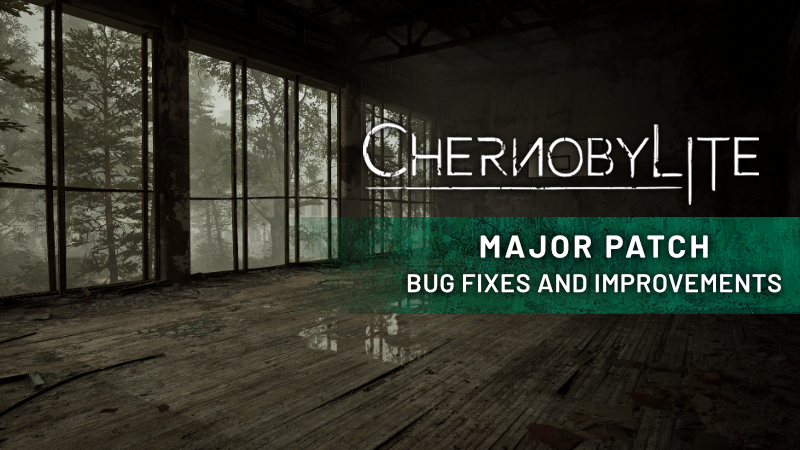Install the app
How to install the app on iOS
Follow along with the video below to see how to install our site as a web app on your home screen.
Note: This feature may not be available in some browsers.
You are using an out of date browser. It may not display this or other websites correctly.
You should upgrade or use an alternative browser.
You should upgrade or use an alternative browser.
D
Deleted member 2197
Guest
I tried the Death Stranding FSR2 mod last night with my 1070 and encountered severe slowdowns/hitching. Not sure it was down to the mod but its the first time the game has behaved like that after many hours of play and it seemed to go away when I turned FSR off. I'll test again tonight but looks like the mod may be unusable for me at least in DS.
Watching the gdc talk as well as reading the codes on GitHub, frankly speaking I’m not really impressed. I feel fsr2’s tech decisions are mostly intuitive and more like an extension from common TAA techniques instead of anything ground breaking. At the end of day, it still falls into the classic trade off between ghosting and shimmering.
I hope amd can come up with an ai based heuristics solution, but without ml accel hardware, I could understand it is very less efficient than dlss2.
Apple has just released their upscaling solution MetalFX. From the wwdc talk, it features both spatial and temporal solutions and does not seem to utilize machine learning. Given the npu built inside apple’s mobile soc, it is kinda disappointing to see too. (Also apple doesn’t give out any implementation details in the talk, even the benchmark is more or less like a joke)
I hope amd can come up with an ai based heuristics solution, but without ml accel hardware, I could understand it is very less efficient than dlss2.
Apple has just released their upscaling solution MetalFX. From the wwdc talk, it features both spatial and temporal solutions and does not seem to utilize machine learning. Given the npu built inside apple’s mobile soc, it is kinda disappointing to see too. (Also apple doesn’t give out any implementation details in the talk, even the benchmark is more or less like a joke)
DegustatoR
Legend
AMD's FidelityFX Super Resolution 2.0 (FSR 2.0) tech produces compelling imagery from low native rendering resolutions, but how was it developed - and what's coming next? To find out, PC graphics enthusiast Alex Battaglia speaks to AMD's director of game engineering, Nicolas Thibieroz.
DegustatoR
Legend


Chernobylite - Major Patch - Bug fixes and improvements - Steam News
In this patch we are introducing AMD FSR 2.0 - new temporal upscaling technology to help improve framerates and overall quality. Also, we were working hard to fix the known issue with the “Ghost of the Past" mission in Pripyat Residential Area and after thorough testing - we are submitting it...
D
Deleted member 2197
Guest

Chernobylite: FSR 2.0 Review
Chernobylite has recently been updated with support for AMD FidelityFX Super Resolution 2.0 (FSR 2.0). In this mini-review, we take a look and compare the image quality and performance offered by FSR 2.0.
That's from June. There's been an update to the game about a week ago and patch notes mention "various FSR 2.0 improvements"
Short video from PCGH, in the description they say ghosting and smearing are fixed.
DegustatoR
Legend
PC improvements:
Added AMD FSR 2.0 support.
Community Update #1 is Live Now! - Dying Light 2 – Official website
DegustatoR
Legend

Red Dead Redemption 2 Title Update 1.31 Notes (PS4 / Xbox One / PC) - Rockstar Games Customer Support
[January 31, 2024] – Game Stability and Performance (PC)Fixed several issues that could result in a crash in Red Dead Online[March 23, 2023] - Maintenance (PC)General maintenance[February 7, 2023] - Maintenance (PC)General maintenance[September 6, 2022] – New Content and Features, General...
 support.rockstargames.com
support.rockstargames.com
View attachment 6877

Red Dead Redemption 2 Title Update 1.31 Notes (PS4 / Xbox One / PC) - Rockstar Games Customer Support
[January 31, 2024] – Game Stability and Performance (PC)Fixed several issues that could result in a crash in Red Dead Online[March 23, 2023] - Maintenance (PC)General maintenance[February 7, 2023] - Maintenance (PC)General maintenance[September 6, 2022] – New Content and Features, General...support.rockstargames.com
Awesome, I might try this out tonight.
It’s time to upscale FSR 2 even further: Meet FSR 2.1!

It's time to upscale FSR 2 even further: Meet FSR 2.1!
One of our engineers shares the improvements we've made with AMD FidelityFX Super Resolution 2 to ghosting, temporal stability, and more.
 gpuopen.com
gpuopen.com

It's time to upscale FSR 2 even further: Meet FSR 2.1!
One of our engineers shares the improvements we've made with AMD FidelityFX Super Resolution 2 to ghosting, temporal stability, and more.
 gpuopen.com
gpuopen.com
FSR 2.1 out, Farming Simulator 22 has it already, Hitman 3 will get it in next update, FSR UE-plugins already updated
Promises better IQ, less ghosting, artifacts etc
DegustatoR
Legend
So what is it? Has it not changed or do developers need to pay attention? Sigh.The application-side FSR 2 API has not changed, so updating to FSR 2.1 from 2.0 should be simple. Developers should pay particular attention to the changes to the Reactive Mask to get the best quality upscale.
Probably just means it's easy as in its a drop in replacement.So what is it? Has it not changed or do developers need to pay attention? Sigh.
But to make the most of the improvements need to update the mask.
That in itself doesn't mean its hard or not simple
Frenetic Pony
Veteran


So top is 2.0, bottom is 2.1
We can see the ghosting trails from the back of the harvester have disappeared in 2.1 As well we can see it's slightly sharper. However there's now some sort of artifacting around the mirror on the right that wasn't there previously. Also there's a temporal "zipper" artifact on one of the harvester's edges, right above the word "Nordsten". This results from overagressive temporal rejection, which some programmers seem to think is "correct" due to rejecting sub-pixel drift, however this is IMO entirely incorrect. Sub-pixel accumulation is the entire point of TAA, and even if tiny movements slightly decrease coverage of an area and introduce new pixel centers, the partial coverage is still correct and the zipper artifacts just look obvious and incorrect in either case.
even junior HTML developer knows that change of algorithm does not require change of API.So what is it? Has it not changed or do developers need to pay attention? Sigh.
I totally agree with you, but that image shows a great improvement overall. Kudos to AMD on this. Finally Radeon owners, and indeed all gamers, can rely on a very good upscaling solution regardless of whether the game is Nvidia sponsored or not!View attachment 6889
View attachment 6890
So top is 2.0, bottom is 2.1
We can see the ghosting trails from the back of the harvester have disappeared in 2.1 As well we can see it's slightly sharper. However there's now some sort of artifacting around the mirror on the right that wasn't there previously. Also there's a temporal "zipper" artifact on one of the harvester's edges, right above the word "Nordsten". This results from overagressive temporal rejection, which some programmers seem to think is "correct" due to rejecting sub-pixel drift, however this is IMO entirely incorrect. Sub-pixel accumulation is the entire point of TAA, and even if tiny movements slightly decrease coverage of an area and introduce new pixel centers, the partial coverage is still correct and the zipper artifacts just look obvious and incorrect in either case.
Similar threads
- Replies
- 7
- Views
- 3K
- Replies
- 41
- Views
- 6K
- Replies
- 581
- Views
- 57K
- Replies
- 31
- Views
- 4K
